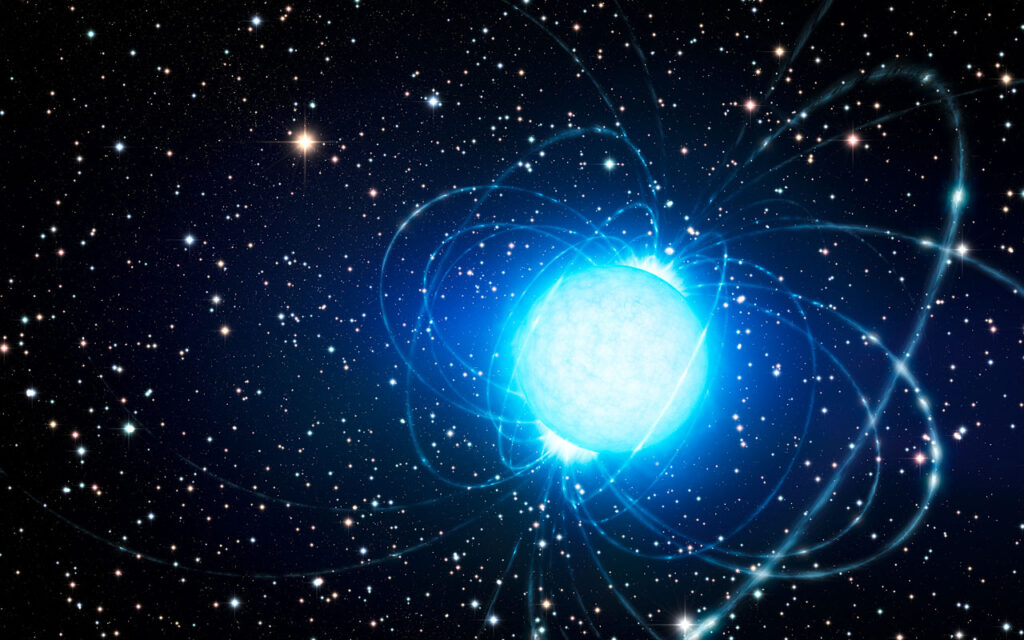The cosmic mystery of fast radio bursts (FRBs) has intrigued astronomers for over two decades.
These intense blasts of energy, emitting more power in a millisecond than the sun does in three days, have puzzled scientists since their discovery. Recent research, however, is shedding light on their origins, linking these powerful phenomena to highly magnetized neutron stars known as magnetars. This discovery not only enhances our understanding of the universe but also opens new avenues for astrophysical research.
Magnetars are a type of neutron star formed from the remnants of massive stars that have undergone supernova explosions. These stars are incredibly dense, with a teaspoon of neutron star material weighing about a billion tons. What sets magnetars apart is their exceptionally strong magnetic fields, which are among the most powerful in the universe. These magnetic fields, combined with the rapid rotation of the neutron stars, create conditions that could explain the intense energy bursts observed in FRBs.

FRBs are among the most violent phenomena in the universe, characterized by rapid bursts of radio waves that flash and vanish in milliseconds. Initially discovered in 2001 in data from the Parkes Observatory in Australia, their exact source has remained elusive. Most FRBs flash only once, while a small fraction repeat, complicating efforts to pinpoint their origins. The recent focus on magnetars as potential sources provides a promising lead in unraveling this cosmic enigma.
A recent study led by Gabriele Bruni and his team at the National Institute for Astrophysics used the Very Large Telescope (VLT) in Chile to investigate FRB 20201124A, an especially active radio burst source located 1.3 billion light-years away. The team detected faint radio continuum emissions associated with the FRB, supporting their “nebular model.” This model suggests that the radio emissions are produced by a bubble of plasma surrounding the FRB source, inflated by winds of charged particles from a magnetar.
The significance of this discovery lies in its potential to explain both repeating and non-repeating FRBs. Magnetars, with their powerful magnetic fields and high rotation rates, are capable of producing the necessary conditions for these bursts. The detection of faint continuum emissions provides strong evidence that magnetar activity is at the heart of these phenomena. This finding helps scientists better understand the extreme physics at play in the universe and offers a new perspective on the behavior of neutron stars.
Future missions and studies will aim to further investigate the environments around FRBs and refine models explaining their origins.
the original research study and associated findings published by Gabriele Bruni and his team at the National Institute for Astrophysics. The detailed investigation was conducted using the Very Large Telescope (VLT) in Chile and is highlighted in their study published in the journal *Nature*.



















